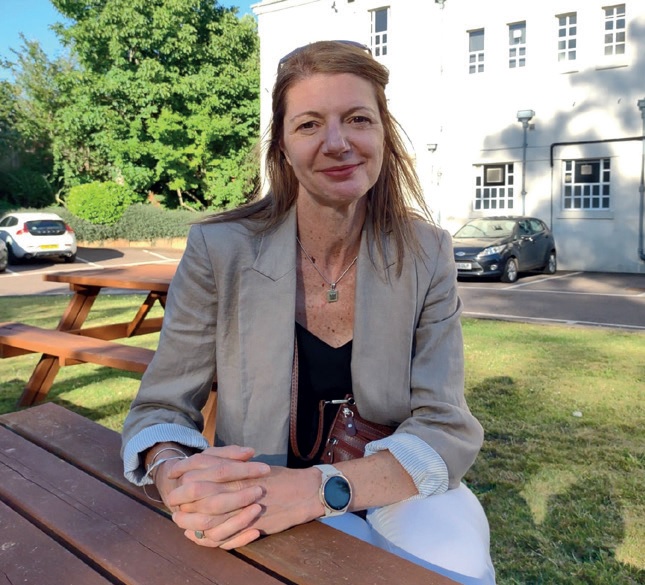On the Right Path – Human Factors (Ergonomics)
Colette Longstaffe, Clinical and Product Assurance Specialist, was recently interviewed in The Ergonomist, a magazine belonging to The Chartered Institute of Ergonomics and Human Factor’s (CIEHF).
Colette shared her experience of being the first person to complete both levels of the CIEHF’s healthcare learning pathway – helping health workers learn more about human factors.
Colette’s role includes the clinical assurance of product frameworks for the NHS, ensuring that products are safe, fit for purpose and meet the end user’s needs.
Colette explains that completing the healthcare learning pathway with CIEHF has given her more confidence and credibility in her role when driving change that aims to increase safety through procurement processes and also helped her learn the theory behind areas such as task analysis, procedures and hierarchy of controls.
See our Downloads ▼ section to read the full article in The Ergonomist.

I wanted to be able to increase my knowledge and confidence around human factors so I could formalise the processes that have already been developed in my team.
Colette Longstaffe, Clinical and Product Assurance Specialist, NHS Supply Chain
Previous Article – October 2021
Human Factors: Users and The Impact of Poorly Designed Medical Devices – Colette Longstaffe
‘Users of poorly designed medical devices will at the very least work inefficiently and at worst contribute to unintended patient harm.’
Human factors is a term increasingly used in healthcare. For nurses it can be summed up as all of the different influences that can have an impact on the delivery of safe and effective care in any setting. This could include anything from our mental, cognitive and physical state on a given day at work; our knowledge and experience of the task we are doing; the design and familiarity with the equipment we are using; distractions caused by our working environment; and the influence and culture of those we work with.
In healthcare, the term human factors is often associated with culture and changing behaviours but it can also be applied to the design and procurement of products, including medical devices, to increase safety for healthcare professionals and patients.
We know that medical device design can be a contributory factor in patient and staff safety incidents. Data published by the National Reporting and Learning System (NRLS) shows that between April 2019 and March 2020 there were over 54,000 patient safety incidents related to medical devices and equipment.
I am a nurse with over 25 years of NHS experience and currently working in the clinical and product assurance team (CaPA) for NHS Supply Chain. I will often joke to colleagues and say that I have no idea how I ended up in this job, but that’s not entirely true. Over the years, I became increasingly aware that the clinical voice is essential in the NHS procurement process to ensure that the products are safe, meet user expectations, and ultimately improve clinical outcomes.
I was a community tissue viability nurse specialist for eight years. In this role, I recognised the importance of the design of the packaging of dressings, specifically around clear labelling of type and size. When a nurse or healthcare support worker is faced with a cupboard full of different dressings and limited time for decision making, unclear labelling can lead to incorrect choice unnecessary waste.
Packaging design is also important to help with non-touch techniques in environments that are far from clinically ideal. If there is a side of the dressing that has to be applied to the wound this needs to be apparent to the user.
Another example is alternating pressure air mattresses which need to incorporate many human factor design principles to ensure they are safe and effective for the user. This includes the ease of setting up the product including programming the patient weight, comfort, alternating settings, compatibility with the bed it is placed on, simplicity of the patient positioning controls, the access to the CPR release and the alarm system together with the complexity of the environment it may be used in – to name just a few. In the community this also often presents challenges for patient and carer users.
Anyone who has been involved in a pressure ulcer investigation will know that one of the key lines of enquiry is the surface the patient has been nursed on. If, for example, the incorrect setting up of the mattress has been identified as contributory factor, additional training for staff may be considered one way to mitigate risk in the future. However, it is only through addressing the design hazards, principles and usability of the mattresses that we provide the highest level of risk mitigation and ultimately reduce potential for patient harm. This approach moves us away from the concept of ‘user error’ to ‘use error’ and is addressed through good design.
To improve safety, it is absolutely essential that human factor and design principles are embedded into the specifications for devices and this is what we are aiming to achieve in my team through focused engagement with the end users of the products to gain a full understanding around who what where how and when they are used.
Despite the best training, experience and competence, users of poorly designed medical devices will at the very least work inefficiently and at worst contribute to unintended patient harm. It is essential that human factor design principles continue to be applied in our procurement processes to increase the likelihood of obtaining well designed and easy to use products to deliver safe care.
This, together with knowledge around previously reported quality complaints and safety issues, is being used to identify those products where human factor usability principles need to be included.
Colette Longstaffe is a Product Assurance Specialist.

